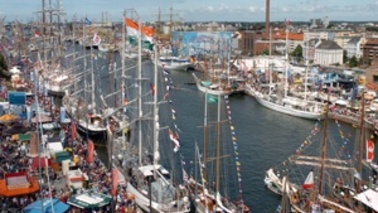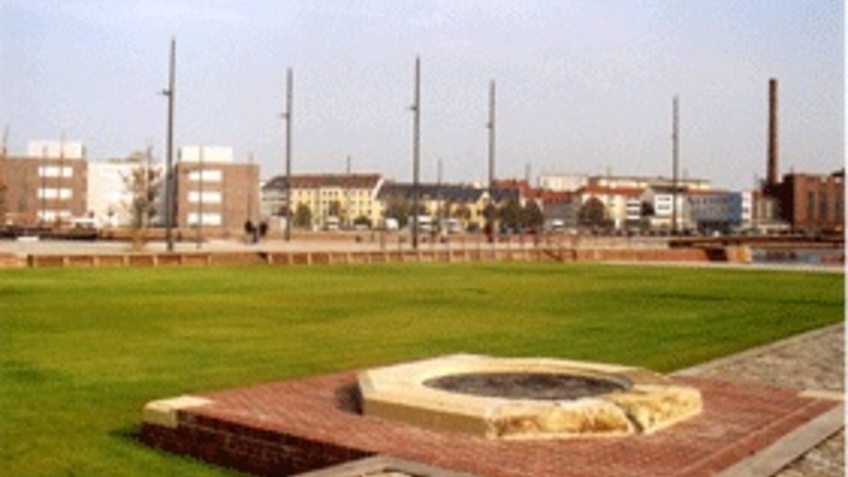
Construction and History of the New Harbor
A service between Bremerhaven and New York was inaugurated with the two American paddle steamers WASHINGTON and HERMANN in 1847. Because of their bulky paddle boxes, these two vessels were not able to enter the Alter Hafen basin at Bremerhaven, but had to cast anchor in the Weser Roads (estuary??). This led to the construction of the Neuer Hafen basin from 1847 to 1852. The works were planned and supervised by the Dutch engineer Johannes Jacobus van Ronzelen (1800-1865), who had already been in charge of the construction of the first Bremerhaven harbour basin, the Alter Hafen (1827 to 1830).
The advent of steam navigation as well as general overcrowding of the Alter Hafen with sailing vessels had led to the construction of the second basin, measuring 230 metres in length and with a beam of 85 metres originally. In 1858, 1862 to 1863 and from 1870 to 1871 the basin was extended to a length of 840 metres.
The North German Lloyd had a dry dock constructed on the western side of the basin from 1871 to 1872. Some remains are still visible today, although much of the dock has been filled in. The original dimensions are still visible however.
The Lloyd line (founded in 1857) was the first main user of the Neuer Hafen basin, with the legendary transatlantic services of that large company setting out from there. After 1870, Lloyd shifted its activities more and more to the Kaiserhafen. The Neuer Hafen basin was subsequently used by other firms such as the salvage company Schuchmann, the construction company Gustav W. Rogge, or the Schichau Shipyard with a branch yard, the latter existing there until 1987. Furthermore, inland barges and coasters used it to load or discharge bulk cargo, and decommissioned vessels were also laid up there. Until September 19th 1991, the basin was in the ownership of the State of Bremen, which also ran the other Bremerhaven commercial ports. But now, the basin has been handed over to the City of Bremerhaven for further use, mainly for tourist activities. This background led to some historical museum vessels mooring permanently at Neuer Hafen. And sailing vessels from all around the world assemble there when the traditional “Sail” festival takes place.

